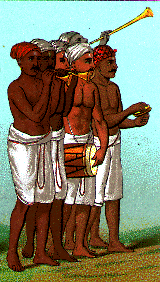![]()
| |

The lithographic process was invented by accident in Bavaria, Germany in 1796. Aloys Senefelder, a man who aspired to be a dramatic author, saw some writing from a washing bill transferred to the stone against which it had been pressed. He seems quickly to have realized the implications of a process he called "Chemical Printing." He took out patents for his invention and in a few years the first books with lithographs were published. Senefelder also pioneered using materials like zinc instead of stone plates, and the use of transfer paper to take original designs from other mediums to plates.
Lithography is drawing on stone. There is no cutting into a material as in woodcuts or line engravings. An artist uses a greasy ink or crayon to make a drawing on the surface of a special kind of yellowish limestone. The drawing can be by pen or crayon, or painted and textured in different ways. Many stones can be used with separate ones for each color. Because grease repels water, each stone can then be treated and washed a number of ways before paper is finally applied to it in a lithographic press to make a print.
Much of the development of lithography was done in France. Painters like Gericault and Delacriox helped make the process respectable for major artists. Honore Daumier popularized it through exquisite parody of the ruling classes. The Spanish artist Goya became a master lithographer while in Bordeaux, France. Manet and Degas were two of its greatest exponents in the 1870's and 1880's. When Japanese wood cut prints (Ukiyo-e) became popular at the end of the 19th century, artists like Henri Toulouse-Lautrec were inspired to make bright color lithographs unlike anything seen before, and which still influence today's poster designs. Picasso is the major figure in 20th century lithography, mostly for his black and white prints. In New York, the firm of Currier and Ives was notable for its vast collection on America issued between 1840 and 1890.
One of the finest French lithographer printers was the firm of Didot, which dominated illustration and typography in Europe for nearly two centuries from the mid-1700's. The above chromolithograph is from Racines, a 12 volume series originally published between 1801 and 1805 depicting dress and clothing styles around the world.
The lithographs which appeared as special supplements to the illustrated weeklies are shown with the original text, if any, of the accompanying article in quotes. Original spellings have been retained, as well as punctuation where possible.